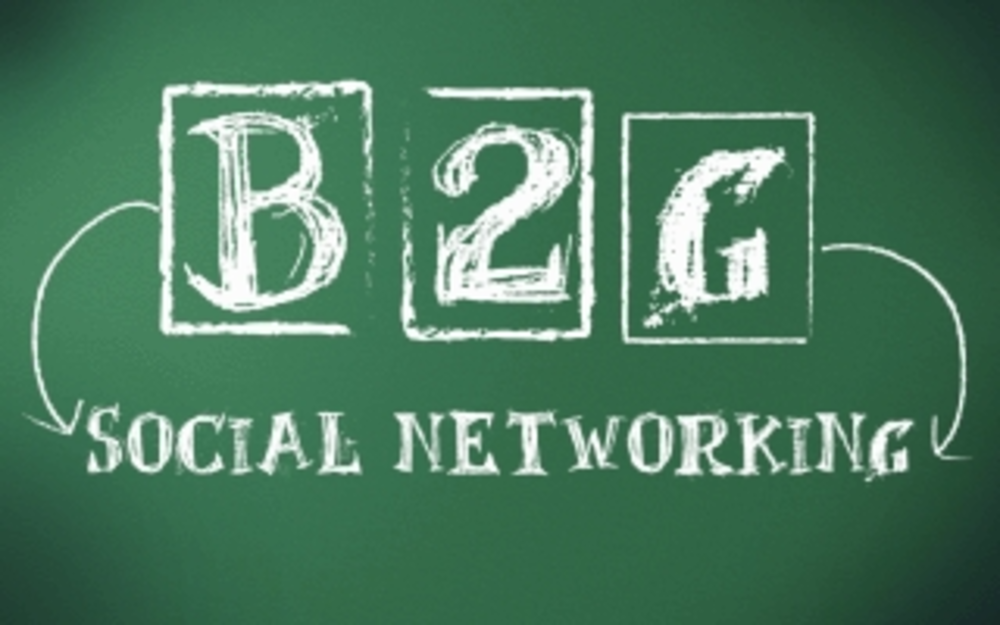As employees of the federal government increasingly tap into social networking sites for work, business-to-government marketers are wisely following suit. These so-called b-to-g marketers are migrating in greater numbers to Facebook, Twitter, blogs and other media to reach current and potential clients.
The percentage of federal employees who are permitted to use social networks on the job increased from 20% in 2010 to 44% in 2012, according to a 2012 study by Market Connections. The portion of federal employees who are social online is only expected to go up, said Monica Parham, marketing director for the research company.
That usage has become more ubiquitous and accepted. “Federal government employees are being allowed to use social media at work,” says Telah Jackson, senior manager of federal marketing at Blue Coat Systems, Inc., a web security and Wide Area Network (WAN) company. “It has opened up a whole new world of how to communicate with them,” Jackson says.
B-to-g marketers use social media just like many other marketers do, she says. It’s all a matter of targeting and fostering relationships — not solely sales. Blue Coat uses Twitter and Facebook to foster brand loyalty by creating narrative and conversation around their products, she says.
Meredith Lawrence, director of federal field marketing at Polycom, Inc., a videoconferencing company, says social media is important for b-to-g because it can act as a funnel from marketing to sales. Polycom uses social media to push its blog posts forward, all of which link back to the home website where government employees can make purchases.
Even more important, she says, is how social media can foster brand identity.
“Our goal is that when we built our program, we wanted to be perceived as thought leaders and educators in our industry,” Lawrence says. “We’re finding that the bigger the imprint with the blog and how we push out our blog posts, the more and more people are coming to us as thought leaders. Then the next step is: We want to buy from you.”
Mark Amtower, author of Selling to the Government and owner of Federal Direct, a b-to-g consulting company, describes all social media as a “relationship networking proposition.” It’s a way to make friends and colleagues — not a venue for a hard sell.
Social media channels draw potential customers
One of the core issues with social media marketing to the government is that few marketers know how to quantify its value.
“Make conversations around what your product is instead of what you’re selling,” Amtower says. “If you come across as a straight sell mode, you would have as much opportunity as you would cold-calling them. And that’s about zero.”
In addition to mainstream social media networks, like Facebook, Twitter and LinkedIn, government employees have specific, targeted networks just for them. For example, Polycom uses the social networking sites GovWin and GovLoop to target government employees, Lawrence says, because knowing where to find the audience is crucial to marketing success. Lawrence says this plays into how Polycom uses social media. It’s a simple activation process: Find your consumers and engage them.
“I think there are two things you can do: You can target people in agencies and follow their conversations,” she says, adding that she targets Polycom’s messaging and blog post topics to match what her consumers are already talking about online. “It’s easy to identify trends because you’ll see key words rising to the top of discussion boards.”
GovLoop is a site that Marc Hausman, president and CEO at Strategic Communications Group, Inc. recommends all of his clients, including Polycom, use.
“It’s LinkedIn for government workers,” Hausman says. “It has about 45,000 members: 70% federal, 20% state or local and 10% industry. These are basically government workers who want to be more effective on their job.” GovWin, he explains, is where contractors like Polycom join and interact with federal government employees — the inverse of GovLoop.
Although neither has a huge following (compare 45,000 with the hundreds of millions of people on Facebook), what is important is the value of these consumers. They’re the ones in the government sector who are practically begging for direct marketing, he explains.
Yet, marketers debate which social media sites are most effective. Amtower believes LinkedIn may be the most valuable site for reaching government employees. “It’s extraordinary the breadth and depth of people who are on there,” he says. “I speak on using LinkedIn as a marketing tool almost daily.”
The key to using LinkedIn effectively, he says, is finding groups to target with your message. It’s no different than any other site, except that it has a large userbase with job titles and professional interests, he says.
Lauren Green, social media manager at Northrop Grumman, manufacturer of drones and airplanes for the military, notes that selling to the federal government via social media is different from selling to the public.
“We’re not looking for consumer feedback,” Green says. In fact, she says, that type of public feedback would be very inappropriate in the government sector, particularly as it relates to the armed forces. “We reach them, they just don’t engage,” she says. “But just because they don’t engage doesn’t mean they don’t see the message.”
“What they’re really selling is a relationship,” Hausman says of the use of social media in b-to-g marketing. “Everything is designed to help with awareness. It all really comes down to credibility and trust.”
“If you’re not progressing the way your targeted customers are progressing, you’re going to get left behind,” Hausman explains, adding that social media and blogging have become “the perfect ways to get our information out there.”








